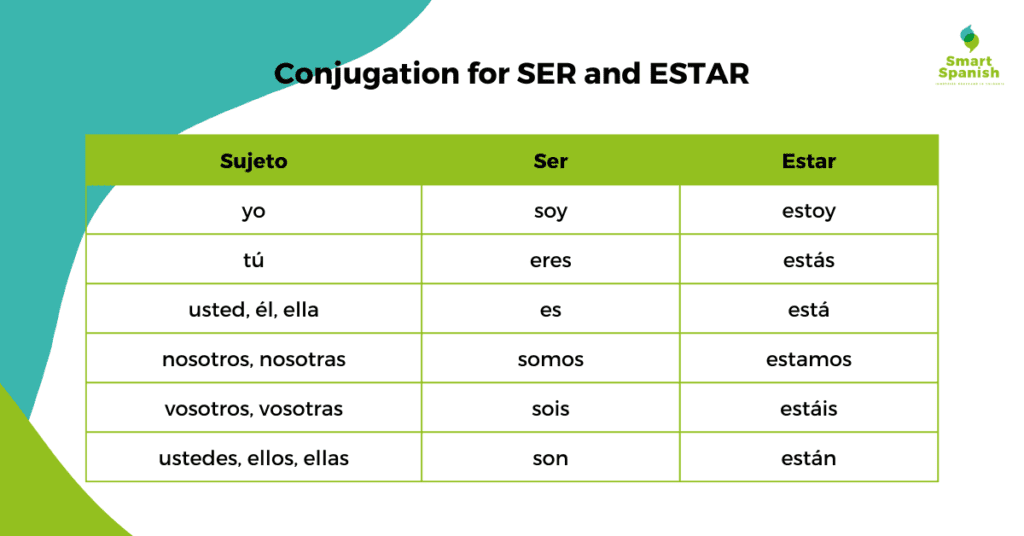Introduction
Embarking on a journey to master the Spanish language invites you to unravel the fascinating world of its verbs. Among the linguistic marvels, “ser” and “estar” stand out for their nuanced ability to convey characteristics and conditions. This guide delves deep into their distinct applications, offering you a comprehensive understanding of how these verbs shape your expressions. Join us as we explore the captivating realm of “ser” and “estar”.
Conjugations of “ser” and “estar”

Unveiling the Core Difference
Before we delve into the intricate details, let’s establish a clear understanding of the core distinction between “ser” and “estar.” While both verbs refer to existence or being, they diverge in their focus. “Ser” is your go-to choice for characteristics that define who or what something is. On the other hand, “estar” finds its purpose in describing conditions, encompassing emotions, locations, and temporary states.
“Ser”: Embracing Characteristics
Think of “ser” as the spotlight that shines on inherent qualities. This verb introduces us to a subject’s identity, profession, origin, and traits that remain consistent over time.
Consider these examples:
- Soy músico. (I am a musician.)
- Ella es inteligente. (She is intelligent.)
- Somos felices. (We are happy people.)
“Estar”: Capturing Conditions
Now, envision “estar” as the versatile lens that captures the temporary essence of a moment. It paints a picture of emotions experienced, location, and conditions that may change.
For instance:
- Estoy emocionado. (I am excited.)
- Estás en la playa. (You are at the beach.)
- La sopa está caliente. (The soup is hot.)
Exploring Emotional Expressions
“Ser” and “estar” add layers of depth to emotional expressions. “Ser” communicates enduring emotional traits, while “estar” allows us to express fleeting sentiments.
Observe:
- Él es triste. (He is a sad person. – Enduring emotional state)
- Él está contento. (He is happy. – Temporary emotion)
Conclusion
With “ser” and “estar” as your linguistic allies, you’re equipped to navigate the diverse terrains of Spanish conversations. Armed with the knowledge of their distinctive applications, you’ll seamlessly weave them into your expressions. Remember, “ser” unveils characteristics, while “estar” paints conditions. As you embark on your language journey, let “ser” and “estar” be your guiding stars, illuminating your path to Spanish fluency.
If you would like to continue practicing and improving your Spanish, take a look at our services here.

